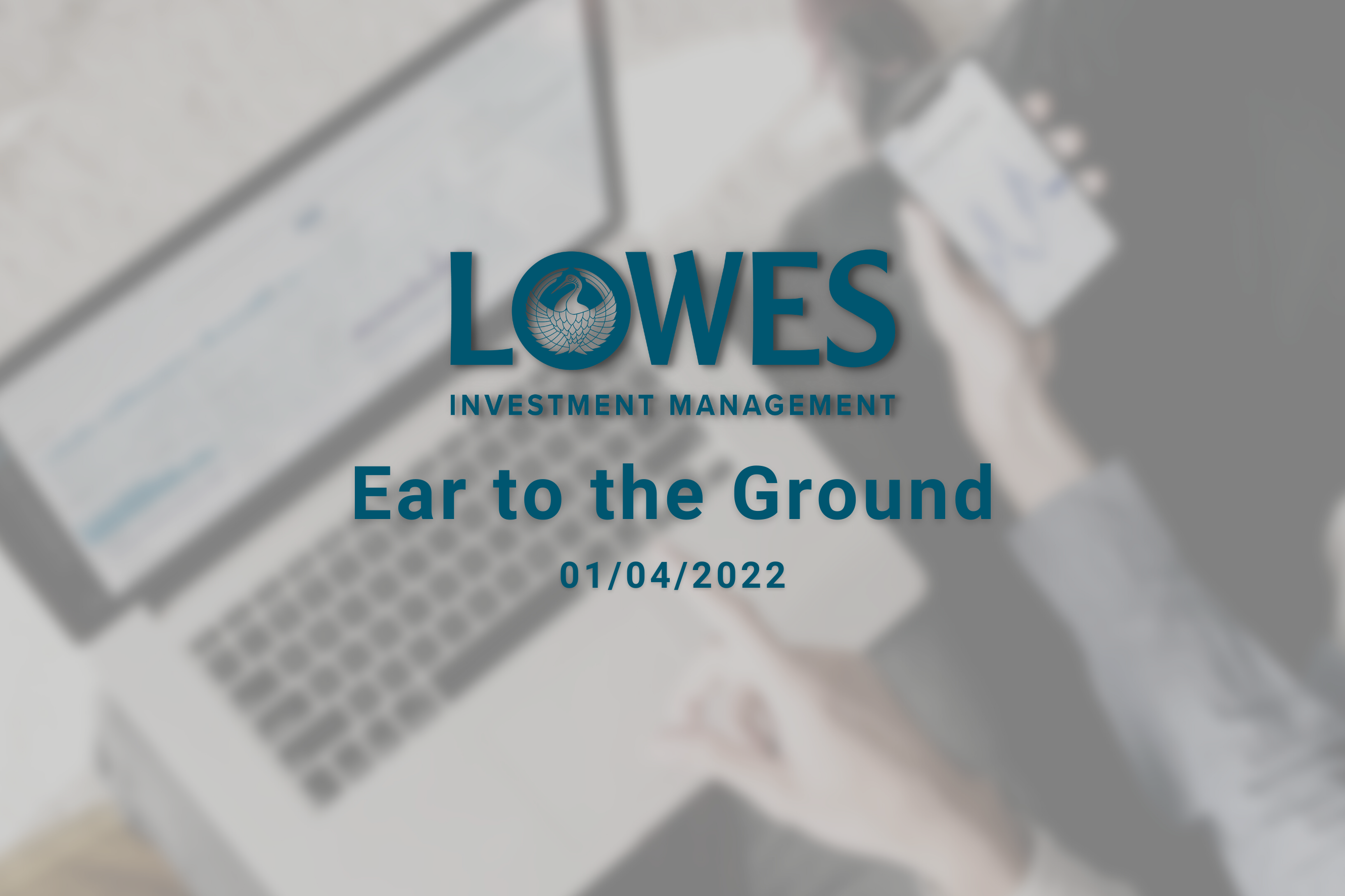Ear to the ground
01 April 2022

As inflation continues to surprise to the upside and the cost of living increases, the market is now pricing in more interest rates hikes in the US, more than the recent Federal Reserve Dot Plot indicated. There are now 8 hikes of 0.25% fully priced in by the market.
This is leading to some investment houses to forecast that the Federal Reserve will in fact hike rates by 0.5% at some meetings, rather than the customary 0.25%. As a consequence we continue to see bond yields rise, particularly at the shorter end of the yield curve. This week saw the US 2 and 10 year yield curve invert for the first time since 2019. As we have discussed in previous editions, this has historically been a good indicator that a recession lies further down the road, although the timing of which admittedly varies greatly. As the saying goes, ‘history does not repeat itself but it rhymes’. For now however the Federal Reserve believes that it will not be the case given the underlying strength of the economy. As always, time will tell.
Whilst the yield curve has flattened this does not mean that yields have not been rising further along the yield curve. Long dated bond yield have also been on the rise. This has negative connotations for mortgage costs in the US, with many fixed to the 30 year bond. The 30 year fixed average mortgage rate is now north of 4.5% and heading towards its high seen in 2018. We have some way to go before we reach the highs in excess of 6.5% seen in 2007 and 2008, but a pinch to the pocket all the same.
So why do inverted yield curves matter? Well, we have already mentioned that they can be a recession lead indicator. There can also be ramifications for asset class returns. Higher bond yields longer term is a good thing for those investors looking for income, but in the short term capital losses for existing investors will potentially need to be endured. Longer term, an inverted yield curve has historically led to a period where bonds outperform equities. This is possibly linked to , whether first point, where a recession tends to follow an inversion.
Key will be what happens to corporate earnings during the forthcoming period. For now, Wall Street Analysts’ estimates for earnings per share for US stocks appears to be flat lining, which is fine. Watch for how this deviates moving forward.
Periods of higher inflation and bond yields however can favour some sectors, whilst being detrimental to others. Historical correlations between equity sectors and the US Treasury 10 year Treasury yield tends to favour sectors such as financials, energy and industrials. At the same time, it can mean bad news for areas such as consumer staples, utilities, information technology and healthcare.
I guess the key questions are, therefore, where and when do bond yields hit their upper bound?
This article is for information purposes only and should not be construed as advice. We strongly suggest you seek independent financial advice prior to taking any course of action.
The value of this investment can fall as well as rise and investors may get back less than they originally invested. Past performance is not necessarily a guide to future performance. The Fund is suitable for investors who are seeking to achieve long term capital growth.
The tax treatment of investments depends on the individual circumstances of each client and may be subject to change in the future. The above is in relation to a UK domiciled investor only and would be different for those domiciled outside the UK. We strongly suggest you seek independent tax advice prior to taking any course of action.
Subscribe Today
To receive exclusive fund notifications straight into your inbox, please complete this form.